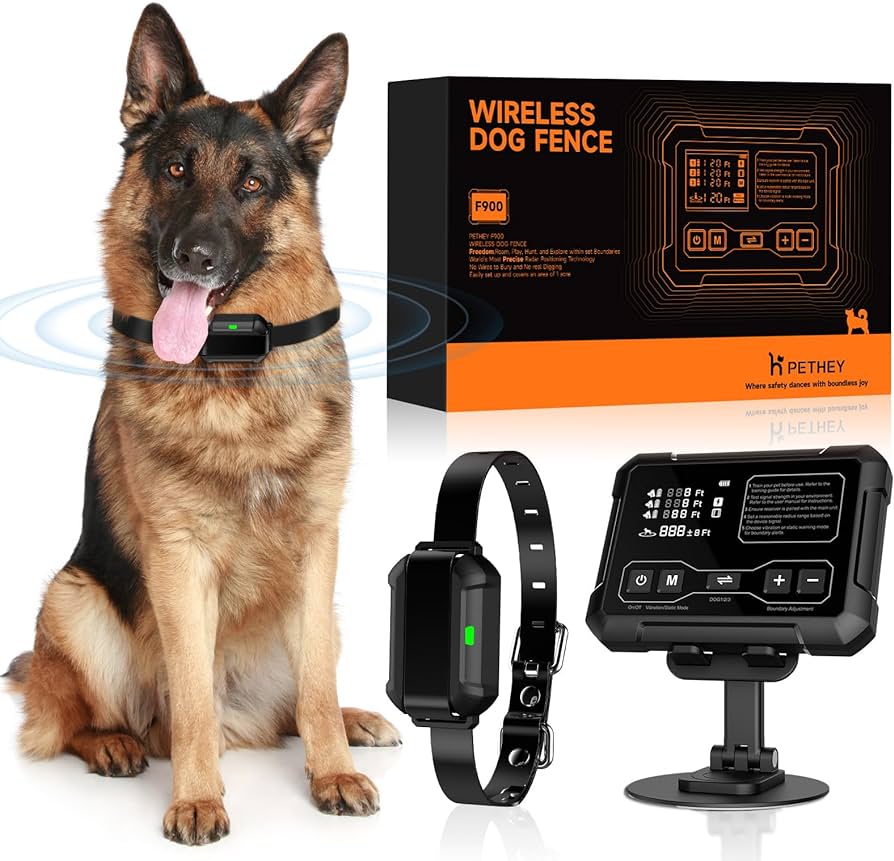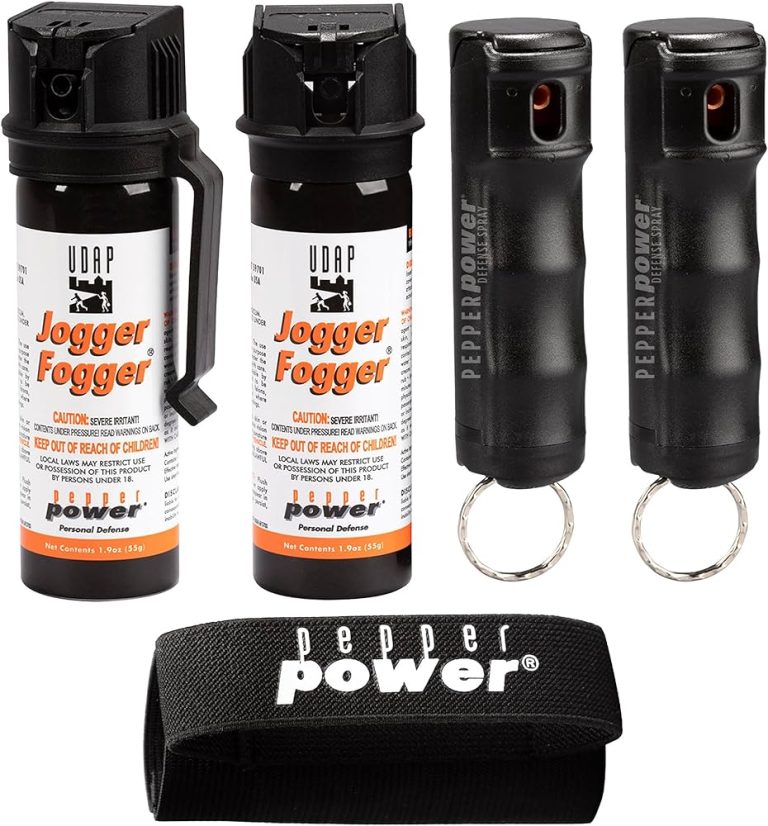9 Invisible Dog Fences for Pet Safety and Freedom in 2024
Finding the perfect way to keep your furry friend safe while giving them the freedom to roam can be challenging. Invisible dog fences have become a popular solution for pet owners who want to avoid traditional fencing. These innovative systems provide a boundary without the physical barrier, ensuring your dog stays within a designated area.
In this article, you’ll discover the 9 best invisible dog fences available today. Whether you’re looking for a wireless option or an in-ground system, we’ve got you covered. Keep reading to find the ideal solution that meets your needs and keeps your pet secure.
Key Features to Consider When Choosing an Invisible Dog Fence
When selecting the best invisible dog fence, it’s crucial to evaluate key features that ensure reliability and suit your needs.
Signal Range
Evaluate the signal range. A good invisible dog fence should have a customizable range to fit various yard sizes. Top models often offer coverage from 0.5 acres to 25 acres.
Type of Correction
Assess the type of correction. Different fences provide static, vibration, or tone corrections when your dog approaches the boundary. Static correction is more common, but having adjustable settings can cater to your pet’s sensitivity.
Battery Life and Backup Features
Check battery life and backup features. Long battery life reduces maintenance, while backup options ensure the fence functions during power outages. Look for models with rechargeable batteries for convenience.
Review of the 9 Best Invisible Dog Fences
Choosing the right invisible dog fence can be tough with so many options available. Let’s delve into the best types to help you make an informed decision.
GPS-Based Invisible Dog Fence Systems
GPS-based systems use satellite technology to create a virtual boundary. These fences are ideal for vast properties and irregular terrains.
- SpotOn Virtual Smart Fence
Provides the largest range, covering up to 1,000 acres. It’s perfect for large estates. The system uses multiple satellites for pinpoint accuracy. - Garmin Alpha 100 TT15
Offers both training and containment features. Its handheld device lets you track and train multiple dogs simultaneously. It’s great for active, outdoorsy pet owners.
Underground Wired Invisible Dog Fence Systems
Underground systems involve burying wires to define the boundary. They offer a stable and reliable signal.
- PetSafe Stubborn Dog In-Ground Fence
Tailored for hard-to-train dogs, offering a higher static correction. Its wire can extend up to 25 acres, making it suitable for large properties. - Extreme Dog Fence Professional Grade
Known for durability and strength. The system includes a thick, heavy-duty wire that withstands wear. It’s designed to last and ensures robust performance. - SportDOG Brand In-Ground Fence System
Covers up to 1 1/3 acres with the initial kit, expandable up to 100 acres. Equipped with lightning protection and a user-friendly interface. Ideal for various property sizes.
Wireless Invisible Dog Fence Systems
Wireless systems create a circular boundary from a central transmitter. These are great for temporary installations and smaller areas.
- PetSafe Wireless Fence (PIF-300)
Provides a safe zone up to 90 feet in all directions. It’s easy to set up, portable, and perfect for travel or changing residences. - Pet Control HQ Wireless Combo Electric Dog Fence System
Combines wireless fencing and a training collar. The system is easy to install and includes adjustable coverage settings. Ideal for training and containment. - JUSTPET Wireless Dog Fence
Offers a range adjustable from 100 to 1,000 feet. Equipped with rechargeable collars and a waterproof design. Good for both urban and rural settings. - Stay & Play Wireless Fence
Provides adjustable coverage up to 3/4 acre. It’s compact, with rechargeable collars and straightforward controls. Best for residential use and small properties.
Detailed Comparison of Top 3 Invisible Dog Fences
Here’s a closer look at the top three invisible dog fences, evaluating their features, pros and cons, and customer feedback to help you make an informed decision.
Feature Highlights
- SpotOn Virtual Smart Fence
- GPS-based system offers precise boundaries.
- Portable with easy customization via mobile app.
- Covers up to 1,000 acres.
- PetSafe Stubborn Dog In-Ground Fence
- Wired system ensures stable boundaries.
- Five adjustable levels of static correction.
- Suitable for stubborn or hard-to-train dogs.
- PetSafe Wireless Fence
- Wireless system with easy setup.
- Adjustable circular coverage up to 3/4 acre.
- Waterproof receiver collar with five correction levels.
Pros and Cons
- SpotOn Virtual Smart Fence
- Pros: Advanced GPS tracking, customizable boundaries, portable.
- Cons: High cost, requires GPS signal for optimal performance.
- PetSafe Stubborn Dog In-Ground Fence
- Pros: Reliable, consistent boundaries, effective for stubborn dogs, expandable.
- Cons: Installation can be time-consuming, limited to the wired area.
- PetSafe Wireless Fence
- Pros: Simple installation, adjustable boundary settings, portable.
- Cons: Circular coverage only, interference with metal objects.
- SpotOn Virtual Smart Fence
- Customers praise the precise boundary settings and portability.
- Common complaints include the steep price and occasional GPS signal issues.
- Average Rating: 4.5/5 stars.
- PetSafe Stubborn Dog In-Ground Fence
- Users appreciate its effectiveness with stubborn dogs and reliability.
- Some note the complex installation process as a downside.
- Average Rating: 4.2/5 stars.
- PetSafe Wireless Fence
- Praised for ease of setup and flexibility.
- Criticized for its circular boundary limitations and potential interference.
- Average Rating: 4.0/5 stars.
Installation Tips for Invisible Dog Fences
Preparing for Installation
Gather all required tools in advance. Most invisible dog fence kits include flags, boundary collars, and a transmitter, but you might need wire cutters, a shovel, and a drill. Choose a clear, dry day for installation to avoid interruptions. Plan your boundary line by marking it with flags or spray paint, keeping any underground utilities in mind to avoid interference. If using a wireless fence, determine the optimal placement for your transmitter, ideally in a weather-protected indoor area near a power outlet.
- Position the Transmitter: Place the transmitter in a dry, covered location near an outlet. Ensure it’s away from large metal objects to avoid signal interference.
- Lay Out the Boundary Wire: If you’re using an underground system, bury the boundary wire about 1-3 inches deep along the marked boundary. Use wire connectors for any splices, ensuring they are waterproof for durability.
- Connect the Transmitter: Attach the boundary wire ends to the transmitter, following the manufacturer’s instructions. Plug the transmitter into the power outlet and turn it on to check for signal issues.
- Place the Flags: Insert the boundary flags along the wire every 10 feet. These visual markers will help your dog understand the fence boundaries during training.
- Set Up the Collar Receiver: Adjust the collar settings and place it on your dog. Ensure it’s snug but not too tight. Test the collar to confirm it’s working correctly within the boundary.
- Test the System: Walk around the boundary with the collar in hand, listening for warning beeps or static corrections to ensure the fence works as expected. Make any necessary adjustments to the boundary or signal strength.
- Train Your Dog: Begin training by walking your dog on a leash around the boundary, reinforcing the visual and auditory signals. Gradually increase off-leash time as your dog becomes familiar with the invisible fence limits.
Following these tips ensures a smooth installation process for your new invisible dog fence, promoting optimal safety and freedom for your pet.
Training Your Dog to Use an Invisible Dog Fence
Training your dog to understand its new boundaries is crucial for the success of an invisible dog fence system. Begin with patience and consistency to ensure your pet stays safe and respects the limits.
Initial Training Sessions
Start with daily training sessions of 10-15 minutes each. Begin by showing your dog the boundary flags and letting them hear the warning beep from the collar. Use a leash to guide your dog around the perimeter. When your dog approaches the boundary, and the collar beeps, call it back and reward with treats or praise. Repeat this process multiple times until your dog starts recognizing the boundary.
Reinforcement and Ongoing Training
Reinforce the initial training by gradually increasing the time and areas where your dog can explore. Continue using the leash until your dog consistently stays within the designated area. If your dog crosses the boundary and receives a correction, calmly bring it back, and reinforce the boundary training. Regularly check and test the system to ensure it’s functioning correctly. It’s also beneficial to periodically reintroduce your dog to the boundary flags and sounds as a reminder. This ongoing training helps maintain your pet’s awareness and respect for the invisible fence over time.
Maintenance and Troubleshooting Common Issues
To keep your invisible dog fence functioning properly, regular maintenance and troubleshooting are essential. Here’s how you can stay on top of issues and ensure your system runs smoothly.
Regular Maintenance Checks
Inspect the Transmitter Weekly.
Make sure to check the transmitter weekly for any signs of damage or wear. Keep it in a dry location to prevent moisture damage.
Test the Signal Monthly.
Regularly test the signal using the collar receiver. Walk along the perimeter to confirm the system is working and the boundary is consistent.
Check the Battery.
Monitor your collar receiver’s battery level. Replace the battery every 3-4 months to avoid unexpected failures.
Examine the Boundary Wire.
Inspect the underground wire for cuts or damage. Use a wire break locator to pinpoint issues and patch them promptly.
Review Collar Fit.
Ensure the collar fits snugly but comfortably around your dog’s neck. Adjust it if it’s too loose or too tight to maintain effective signal reception.
Troubleshooting Signal and Boundary Problems
Interference.
Check for interference from metal objects, electronics, or other wireless devices. Move them away from the transmitter to improve signal clarity.
Boundary Testing.
Use the collar receiver to test and verify the boundary line. Adjust the transmitter settings if the signal seems weak or inconsistent.
Wire Breaks.
Locate wire breaks with a wire locator tool. After finding a break, strip the insulation and twist the wires together or use waterproof wire connectors for a durable fix.
Collar Malfunctions.
Reset or replace the collar receiver if it’s not picking up signals. Ensure it’s programmed correctly, and replace batteries when necessary.
Training Refreshers.
If your dog ignores the boundary, retrain them. Walk them around the perimeter, reinforcing the warning beep and static correction until they remember the boundaries.
With these tips, you’ll ensure your invisible dog fence remains effective and provides your pet with a safe, secure environment.
Safety Considerations and Precautions
Ensuring your pet’s safety is crucial when using an invisible dog fence. Here are some key considerations to keep in mind:
Health and Safety Concerns
Monitor your dog’s health. It’s essential to check if your dog’s health condition permits the use of an invisible fence. Some dogs, particularly those with heart conditions or nervous dispositions, might react negatively to the correction stimuli.
Inspect the collar fit. Ensure the collar is properly adjusted to avoid skin irritation or sores. A poorly fitted collar can cause discomfort and may even lead to injury.
Test the system regularly. Regularly check the functionality of the invisible fence system. Any lapse in the system might lead to your dog escaping the boundaries, exposing them to potential dangers.
When to Use and When to Avoid
Evaluate your dog’s temperament. Use invisible dog fences for dogs that are generally well-behaved and responsive to training. This method might not be suitable for aggressive or highly anxious dogs.
Consider your yard size. Employ invisible fences in medium to large yards where the dog has ample space to roam. Small yards might not provide enough room for the dog to enjoy freedom.
Avoid usage near busy roads. Do not use invisible dog fences in areas with heavy traffic nearby. The risk of the dog breaching the boundary in high-stress situations increases significantly.
By adhering to these safety considerations and precautions, you can create a safe and secure environment for your pet within the confines of an invisible dog fence.
Conclusion
Choosing the right invisible dog fence can significantly enhance your pet’s safety and freedom. With options ranging from GPS-Based to Wireless systems, there’s a solution for every need and yard size. Remember to invest time in proper installation and training to ensure your dog understands their boundaries. Regular maintenance and troubleshooting will keep the system functioning optimally. Always prioritize safety by monitoring your pet’s health and ensuring the collar fits correctly. By following these guidelines, you’ll create a secure environment where your dog can play and explore without worry.






